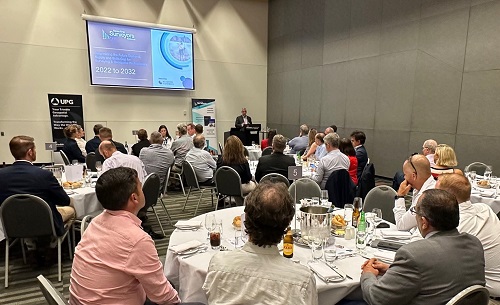
Australia needs thousands more surveyors over the next decade and beyond.
The completion of infrastructure for the 2032 Brisbane Olympics and several other major projects around the country may be affected if action is not taken to address the severe skills shortage in surveying, new data has revealed.
Total construction and building activity is set to increase nationally due to a strong pipeline of infrastructure projects and a backlog of residential work. But no building or infrastructure project can be started or finished without a surveyor.
The critical surveying shortage could affect other major projects around the country, such as Sydney’s Western Harbour Tunnel, the Melbourne Metro Rail, the Northern Territory’s RAAF Base in Tindal, Tasmania’s New Bridgewater Bridge and the Canberra Light Rail.
An independent economic analysis by BIS Oxford Economics — Determining the Future Demand, Supply and Skills Gap for Surveying and Geospatial Professionals: 2022-2032 — launched yesterday, reveals the skills shortfall in the surveying and geospatial profession will reach nearly 1,400 professionals nationally by 2024, eventually reaching more than 2,000 in 2029. This equates to an average of 1,500 extra surveyors and geospatial professionals needed each year to meet national demands.
The current total workforce in Australia of the surveying and geospatial profession is estimated to be around 19,000 in 2021–22.

Consulting Surveyors National President, Craig Turner, at the launch of the surveying shortage report.
Research reveals that market demand for surveying and geospatial services will continue to grow over the next ten years, which will require a workforce of 21,000 professionals to meet demand.
Every state and territory will experience shortages, but Queensland and Western Australia will be the worst hit over the next ten years, as those states are set for elevated levels of construction activity due to a recovery in mining investment, elevated residential construction and historically high levels of public funding for infrastructure projects — especially given the associated infrastructure required for the 2032 Olympics in Queensland.
Director of Surex Surveyors, Cameron Mills, is especially concerned about the skills shortage, as his organisation works on major infrastructure projects in Queensland, New South Wales and Victoria.
“I desperately need 20 more surveyors to meet current demand, so increased demand over the next ten years will only raise this figure. It impacts the commencement and completion of projects, adding undue pressure on our business and current teams,” he said.
CEO of Consulting Surveyors National, Michelle Blicavs, says that the statistics continue to reinforce the situation of severe shortages across Australia.
“The industry has been working hard to increase the number of surveying professionals over the last 12 years, but the biggest challenge has been the TAFE sector not delivering the training required,” she said.
“We are working with universities around the country to increase the number of students studying surveying. But there is a severe lack of vocational training available, particularly in Queensland.
“Relevant surveying courses have been removed from TAFE’s around the country so there’s just nowhere near enough vocational training in surveying across Australia, it’s actually non-existent in Queensland.
“Our industry has come together to develop our own national Surveyors Academy to combat this issue, but this Academy needs funding.”












